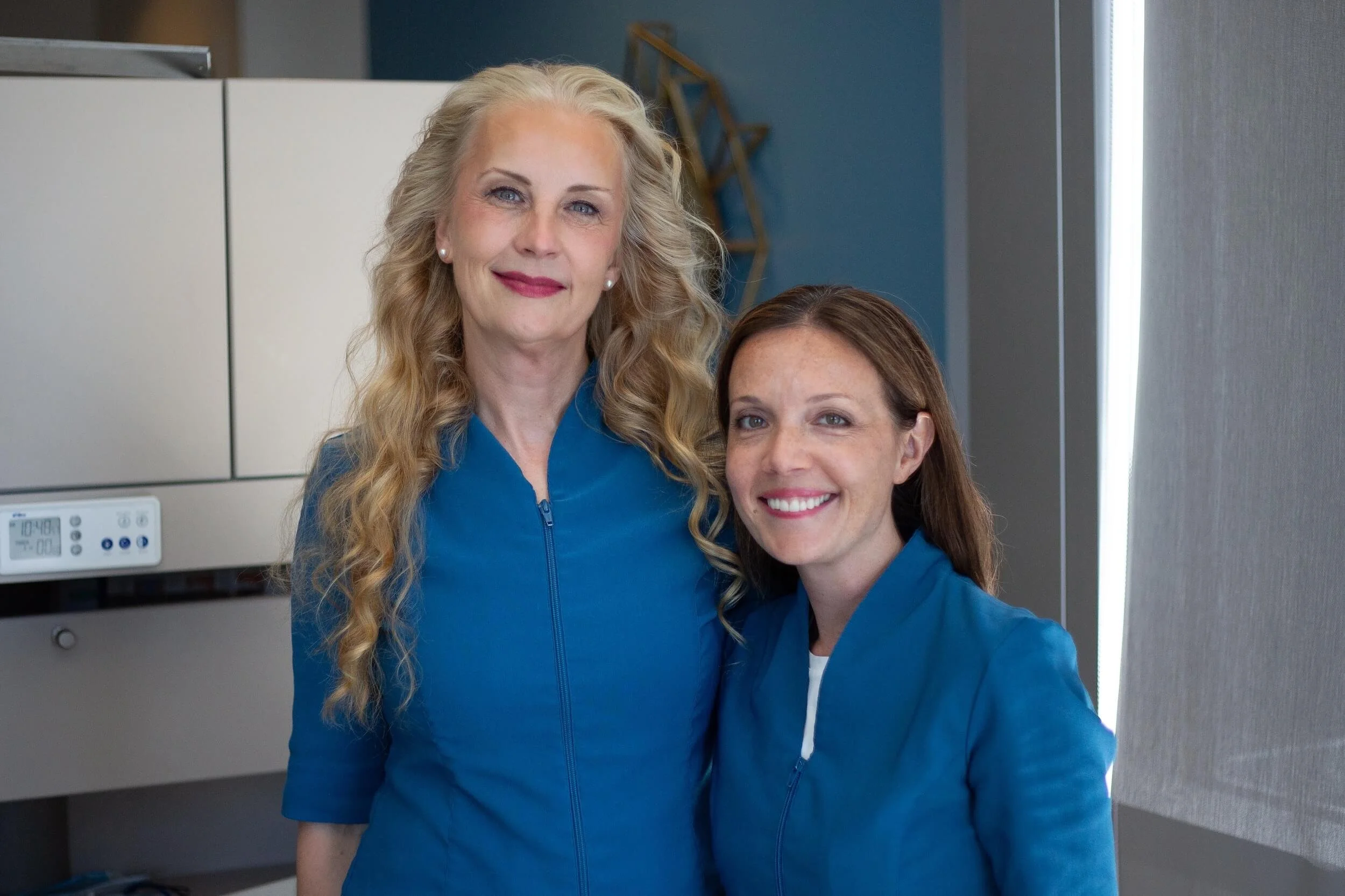Friendly children’s dentists in Surrey
We welcome your whole family at our office and recommend bringing your child at the age of one year, or six months after the first tooth erupts.
Your child’s first dentist visit
We’ll do an exam (and this may just be a chair ride the first visit), use kid-friendly terms such as Mr. Thirsty (suction) and counting teeth.
We’ll discuss diet and hygiene habits with the caregivers and possibly even polish and shine the teeth and place vitamins.
It’s important to have your child come in early so that they get comfortable in the dental chair.
Why are baby teeth important?
Primary teeth save space for permanent teeth and guide their position.
They also help with speech, prevent the tongue from posturing abnormally, and help with chewing food.
Healthy primary teeth lead to healthy adult teeth!
Tips for Parents
Brush kids’ teeth twice per day
Start flossing early (as soon as 2 teeth touch)
Provide a balanced diet - watch sugar and starch intake
How to Brush
Hold the toothbrush at a 45-degree angle to the teeth. Point the bristles to where the gums and teeth meet.
Use gentle circles. Do not scrub. Clean every surface of every tooth. For the front teeth, use the "toe" or front part of the brush. The key word is gentle. You can hurt the gums by brushing too hard.
Image credit: Canadian Dental Association
Toothbrushes
The best kind of brush is soft, with rounded bristles. It should be the right size for your child's mouth. You will need to buy a new toothbrush at least every 3 or 4 months. Children can be hard on toothbrushes. If the bristles get bent or worn down, they will not do a good job, and may hurt your child's gums.
Toothpaste
Make sure the toothpaste has fluoride. Check the box or tube for the symbol of the Canadian Dental Association. This symbol means the toothpaste has fluoride. Use only a bit of toothpaste and make sure your child spits it out.
Excessive swallowing of toothpaste by young children may result in dental fluorosis, so children under 6 years of age should be supervised during brushing and only use a small amount of toothpaste.
How to Floss
Take a piece of floss about as long as your child's arm. Wrap it around your middle fingers, leaving about 2 inches between the hands. Use your index fingers to guide the floss between the teeth.
Slide the floss between the teeth and wrap it into a "C" shape. It should wrap around the base of the tooth, where the tooth meets the gum.
Wipe the tooth from bottom to top 2 or 3 times or more, until it is squeaky clean.
Be sure you floss both sides of each tooth, and don't forget the backs of the last molars. Move to a new part of the floss as you move from tooth to tooth. After flossing, roll it up in a tiny ball and put it in the garbage. Never flush floss down the toilet.
Image credit: Canadian Dental Association





